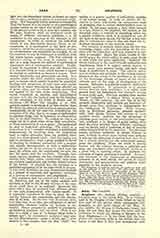

Anaphora (Gr., anaphora offering, sacrifice), a liturgical term in the Greek Rite. It is variously used in the liturgies of the Greek Orient to signify that part of the service which corresponds substantially to the Latin Canon of the Mass. It also signifies the offering of Eucharistic bread; the large veil (see Aer) that covers the same, and the procession in which the offering is brought to the altar (Brightman).—1. In the Greek Rite the Anaphoras are numerous, while in the Roman Rite the Canon of the Mass is from time immemorial quite invariable. The Greek Anaphora is substantially of apostolic origin, though in its present form it dates from the end of the fourth or the beginning of the fifth century when St. Basil the Great and St. John Chrysostom (respectively) shortened the liturgy that until then was very long and fatiguing. The term is of much importance, given its antiquity, for the demonstration of the sacrificial character of the Holy Mass (see Cabrol, 1911-13; Probst, 240, 325).—2. In the Eastern or Greek Church the Offertory is a more deliberate and impressive ceremony than in the Roman Rite. The priest accompanied by the deacon and the acolytes and censer-bearers, goes to the prothesis (a small side altar where the proskomide is performed) and they solemnly bring the blessed bread and wine through the shall diaconal door of the iconostasis and proceed to the center of the church or at least directly in front of the royal doors, where, turning to the people and holding the sacred gifts in their hands they pray successively for the ecclesiastical and secular authorities. In the Greek Orthodox Church prayers are said for the emperor or king, the Holy Synod, and the various church dignitaries. In the Greek Catholic Church these prayers are said for the Pope, the Archbishop, Emperor, King, etc., using the same words. The priest and deacon then proceed solemnly to the altar bearing the Sacred Elements through the royal doors. This part of the Greek Mass is called the Great Entrance. After the paten and chalice have been placed on the altar the priest completes the Offertory with this prayer: “Receive also the prayer of us sinners and cause it to approach Thy Holy Altar, and strengthen us to present gifts and spiritual sacrifices unto Thee for our sins and the ignorances of the people, and count us worthy to find grace before Thee; that our sacrifice may be acceptable unto Thee; and that the spirit of Thy grace may rest upon us and upon these gifts presented, and upon all Thy people”. (See Consecration; Sacrifice of the Mass; Greek Rites.)
ANDREW J. SHIPMAN

